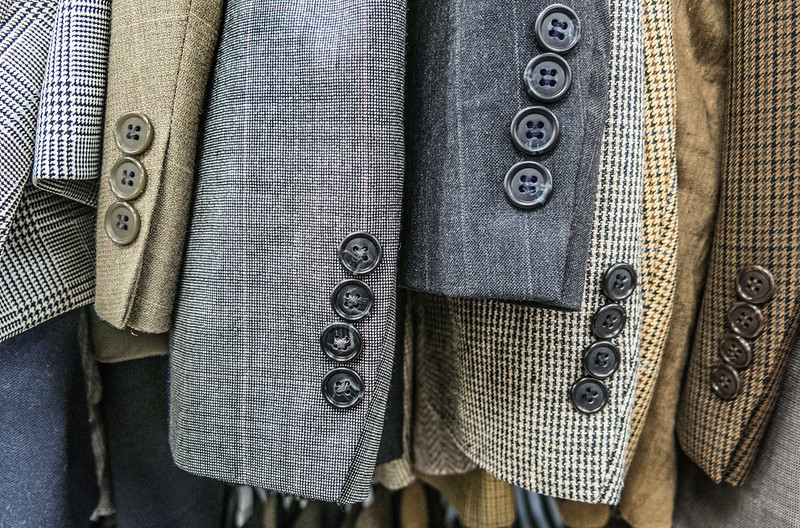The fast fashion market (and its huge environmental footprint) has been growing exponentially over the past few decades; while sales of secondhand clothing, facilitated by digital tools, are also on the rise. But is it enough to stem mainstream fashion’s toxic tide?
Fashion is an incredibly polluting industry. The production of our clothes is responsible for depleting the world’s water supplies, a large fraction of the world’s pesticide use, an estimated 35 percent of microplastic flows into our oceans, and for an oversized presence in our landfills. In fact, it is thought that three-fifths of all clothing ends up in landfills or incinerated just years after being produced. It is clear that the fast-fashion world cannot continue with business as usual. In fact, if it does, by 2050 the fashion industry is set to use up a quarter of the world’s carbon budget. So, what is the future of clothing in regard to sustainability? And to what extent can apps and the internet help us step away from the unsustainable “fast fashion” that makes up so much of the market and towards something more sustainable?
In Praise of Purchasing Pre-Owned
As is the case with many sectors, digital technologies are fundamentally disrupting the fashion industry. Just one example of this is the fairly recent proliferation of apps and websites specifically designed to facilitate the selling and purchasing of used or “pre-owned” clothing. And they’re being used by more than just vintage-piece seekers; in fact, the value of the global secondhand apparel market doubled between 2014 and 2018, and is set to rise even further, with most of that growth fuelled by younger generations, the so-called millennials and Gen Z-ers. Buying secondhand clothing is not a new idea, but the convenience of being able to browse, buy (and in some cases even sell it) it via your phone, tablet or laptop, is.
And it’s not just for specific groups of people. There are used clothes for everyone, and apps for all, from those seeking everyday clothing to those focused solely on high-end fashion. Some popular apps where all you need to do is swipe and click to buy and sell secondhand clothing include London-based Depop, Vinted/Kleiderkreisel across mainland Western Europe and thredUP in San Francisco. According to a recent market report from preowned clothes giant thredUP, whose automation system processes over 100,000 unique clothing items a day, “Secondhand is projected to grow to nearly 1.5x the size of fast fashion by 2028.”
 © Vinted
© Vinted If the unpredictability of secondhand shopping isn’t your thing, and you want your fashion fix fast, another digital alternative nowadays is online fashion rental services. What started as an economical way of getting to wear a fancy ballgown or wedding dress – renting it for a night rather than buying it outright – is now a billion dollar industry. There are a huge range of fashion companies joining the sharing economy (Rent the Runway, Le Tote, My Wardrobe HQ and Nuuly to name just a few), who offer everything from luxury gowns for special occasions to subscription services that will deliver you a set number of everyday basics for a monthly fee.
All of them offer renters the chance to try out new looks for a set amount of time, before sending them back to be washed and sent out to someone else – the dopamine rush without the commitment. Some companies explicitly promote themselves as a more sustainable option, although the jury is still out on whether their environmental impact is entirely positive. Each item clothing ends up being transported multiple times, and washed (often dry-cleaned) regardless of whether it was actually worn. Not to mention the fact that low-quality clothes might not even withstand multiple rotations. It’s even been accused of fuelling the fast fashion mentality rather than satiating it – encouraging consumers to see clothing as something fleeting and disposable.
Fast Fashion Giants Want a Piece of the Action
The rise of both of these alternative fashion trends has impacted mainstream fashion players too. Huge online clothing companies like Zalando with its “Zalando Wardrobe” and ASOS with its “Marketplace” are also offering secondhand clothing for sale. In the US, a number of established brands are now setting up their own clothing rental services, and fast fashion super giant H&M is currently opening a rental store in Sweden, including an area for clothing to be repaired and mended.
Although it’s easy to dismiss these efforts by retailers (whose practices are otherwise generally hugely unsustainable) as greenwashing, it’s interesting to see that they too are responding to consumers’ growing desire for more sustainable options. According to McKinsey’s 2019 Apparel Chief Purchasing Officer Survey, sustainable sourcing is the fashion industry’s current priority, as the issue becomes increasingly important issue for consumers and governments. And while the absolute number of sustainable fashion products remains low, there has been a fivefold increase over the past two years. Companies that dont adapt to changing approaches will soon be left behind.
RIght now, collectively we continue to buy too much low-quality clothing, and discard it before it has even remotely begun to reach the end of its useful life. And fashion companies continue to encourage us to buy more us when we don’t need to – completely contradictory to sustainable thinking. Truly sustainable fashion ultimately involves us buying less – buying fewer, but more expensive, ethically made, higher-quality pieces that we’ll love for years to come. Definitively stepping away from fast fashion will probably be a long and lengthy process, requiring us to rewire our brains to stop craving new things that we don’t need. So right now, having easy access to alternatives – whether it’s secondhand or rented – is certainly a very good thing. Their existence, and their convenience, may help encourage more consumers to shop more sustainably, or at least consider the impact of our otherwise unsustainable consumption habits. Maybe even helping us realise that the most sustainable item of clothing is, and always was, what’s already hanging in your wardrobe at home.






